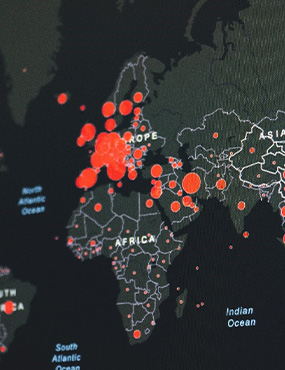
Detecting artificially manipulated genomes
Gene-editing technologies such as the CRISPR-Cas system, can be used to modify the genome of an organism. One important application of this technology is in biosecurity, where gene editing can be used to control emerging biosecurity threats. However, this technology also poses a significant risk, whereby the unintentional spread of genetically altered material through inadvertent escape of malicious bad actors could endanger the health and wellbeing of society or cause irreparable damage to the ecosystem.
To protect Australia from these biological threats, appropriate methods that can detect artificially manipulated genomes are required. These methods are essential for monitoring and responding to potential biological threats arising from the unintentional spread of genetically altered material, or the intentional attack on human health through bioterrorism.
This project aims to develop new computational methods for detecting artificially manipulated genomes. By leveraging species-specific characteristics of genome sequences and the biased mutation profiles of gene editing technologies, artificially manipulated genomes can be detected. The software tools developed in this project will therefore allow for routine and timely detection of artificially manipulated genomes. This will give us the capacity to detect and respond to potential biological threats and hence, preserve Australia’s national interest.
Funding: Office of National Intelligence
Partners: Commonwealth Scientific and Industrial Research Organisation (CSIRO)
Contact: Dr Aidan Tay